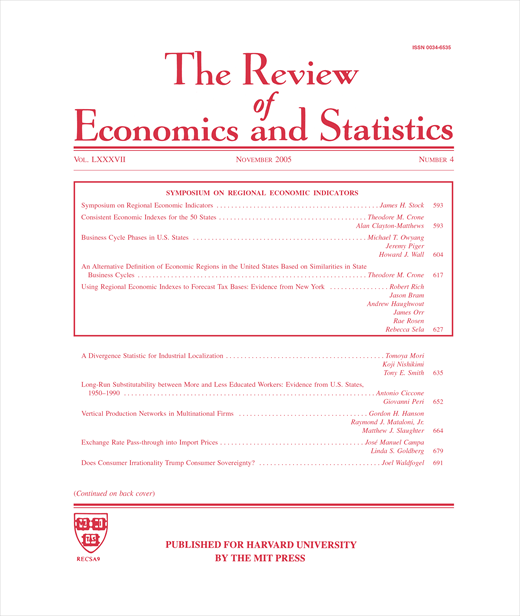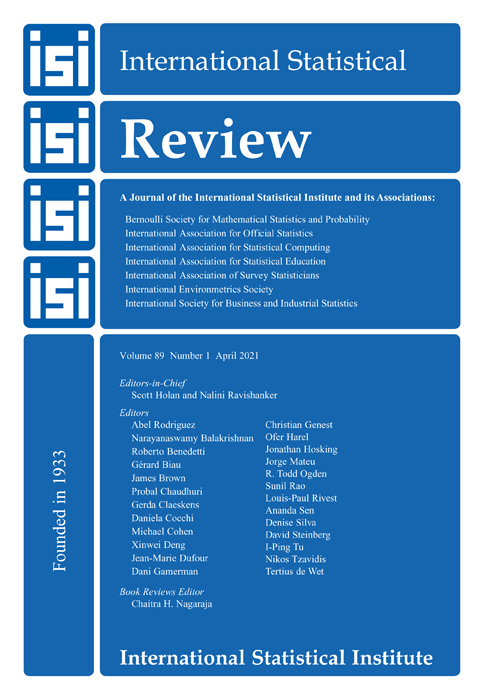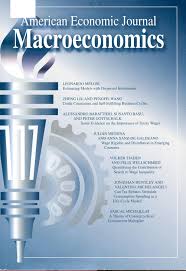Entrepreneurship, Innovation, and Productivity Growth
This group tackles research topics that are of relevance for our understanding of patterns of innovation and productivity growth and explores implications for workers and firms. Areas of particular focus include the decline in business dynamism, the growth in automation, entrepreneurship and innovation, and supply chains.
Research Cluster
Productivity and InstitutionsYour contact

Mitglied - Department Structural Change and Productivity
Refereed Publications

Who Creates Jobs? Small versus Large versus Young
in: Review of Economics and Statistics, No. 2, 2013
Abstract
The view that small businesses create the most jobs remains appealing to policymakers and small business advocates. Using data from the Census Bureau's Business Dynamics Statistics and Longitudinal Business Database, we explore the many issues at the core of this ongoing debate. We find that the relationship between firm size and employment growth is sensitive to these issues. However, our main finding is that once we control for firm age, there is no systematic relationship between firm size and growth. Our findings highlight the important role of business start-ups and young businesses in U.S. job creation.

Towards Unrestricted Public Use Business Microdata: The Synthetic Longitudinal Business Database
in: International Statistical Review, No. 3, 2011
Abstract
In most countries, national statistical agencies do not release establishment-level business microdata, because doing so represents too large a risk to establishments’ confidentiality. One approach with the potential for overcoming these risks is to release synthetic data; that is, the released establishment data are simulated from statistical models designed to mimic the distributions of the underlying real microdata. In this article, we describe an application of this strategy to create a public use file for the Longitudinal Business Database, an annual economic census of establishments in the United States comprising more than 20 million records dating back to 1976. The U.S. Bureau of the Census and the Internal Revenue Service recently approved the release of these synthetic microdata for public use, making the synthetic Longitudinal Business Database the first-ever business microdata set publicly released in the United States. We describe how we created the synthetic data, evaluated analytical validity, and assessed disclosure risk.

Business Volatility, Job Destruction, and Unemployment
in: American Economic Journal: Macroeconomics, No. 2, 2010
Abstract
Unemployment inflows fell from 4 percent of employment per month in the early 1980s to 2 percent by the mid 1990s. Using low frequency movements in industry-level data, we estimate that a 1 percentage point drop in the quarterly job destruction rate lowers the monthly unemployment inflow rate by 0.28 points. By our estimates, declines in job destruction intensity account for 28 (55) percent of the fall in unemployment inflows from 1982 (1990) to 2005. Slower job destruction accounts for similar fractions of long-term declines in the rate of unemployment.

Labor Market Analysis and Public Policy: The Case of Morocco
in: World Bank Economic Review, No. 3, 1999
Abstract
This article uses detailed industry and household data to understand why Morocco's labor market performed poorly in 1985–95. The data indicate that marked structural changes and weak demand in the product market were responsible. This article makes two contributions to the literature. The first is specific: it underscores that the demand for labor is a derived demand and that the performance of the product market is an important determinant of the performance of the labor market. The second is more general: it demonstrates that this kind of microeconomic analysis, using data sets that are often available in developing countries, can inform policy design.
Working Papers

Early-Stage Business Formation: An Analysis of Applications for Employer Identification Numbers
in: NBER Working Paper, No. 24364, 2018
Abstract
This paper reports on the development and analysis of a newly constructed dataset on the early stages of business formation. The data are based on applications for Employer Identification Numbers (EINs) submitted in the United States, known as IRS Form SS-4 filings. The goal of the research is to develop high-frequency indicators of business formation at the national, state, and local levels. The analysis indicates that EIN applications provide forward-looking and very timely information on business formation. The signal of business formation provided by counts of applications is improved by using the characteristics of the applications to model the likelihood that applicants become employer businesses. The results also suggest that EIN applications are related to economic activity at the local level. For example, application activity is higher in counties that experienced higher employment growth since the end of the Great Recession, and application counts grew more rapidly in counties engaged in shale oil and gas extraction. Finally, the paper provides a description of new public-use dataset, the “Business Formation Statistics (BFS),” that contains new data series on business applications and formation. The initial release of the BFS shows that the number of business applications in the 3rd quarter of 2017 that have relatively high likelihood of becoming job creators is still far below pre-Great Recession levels.













